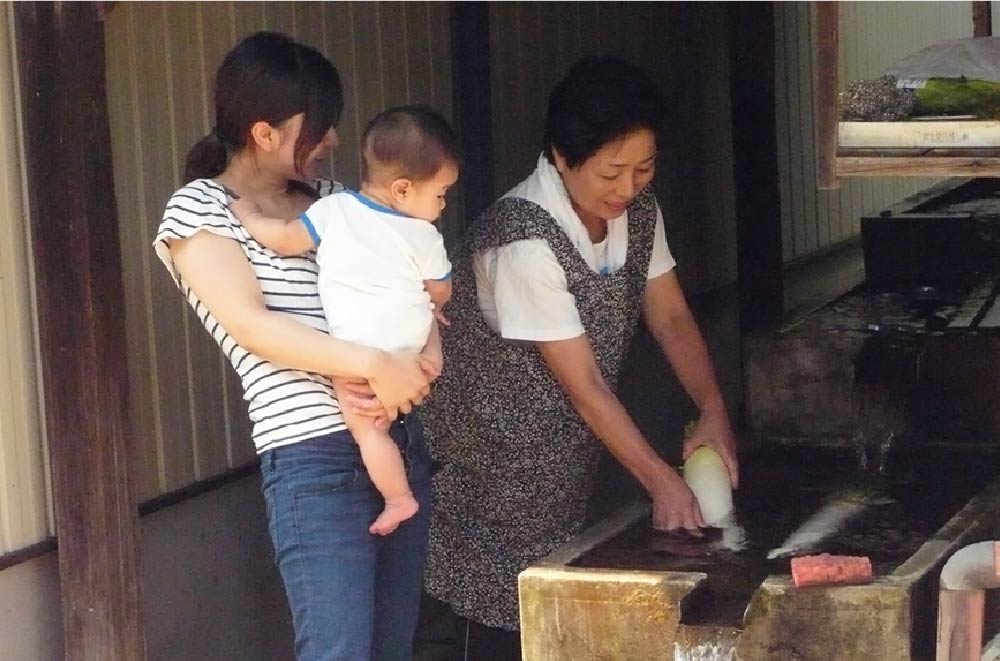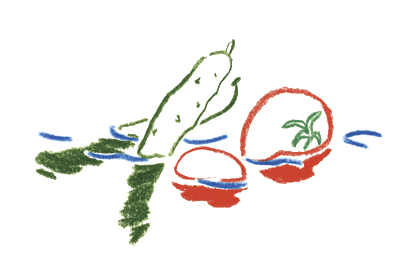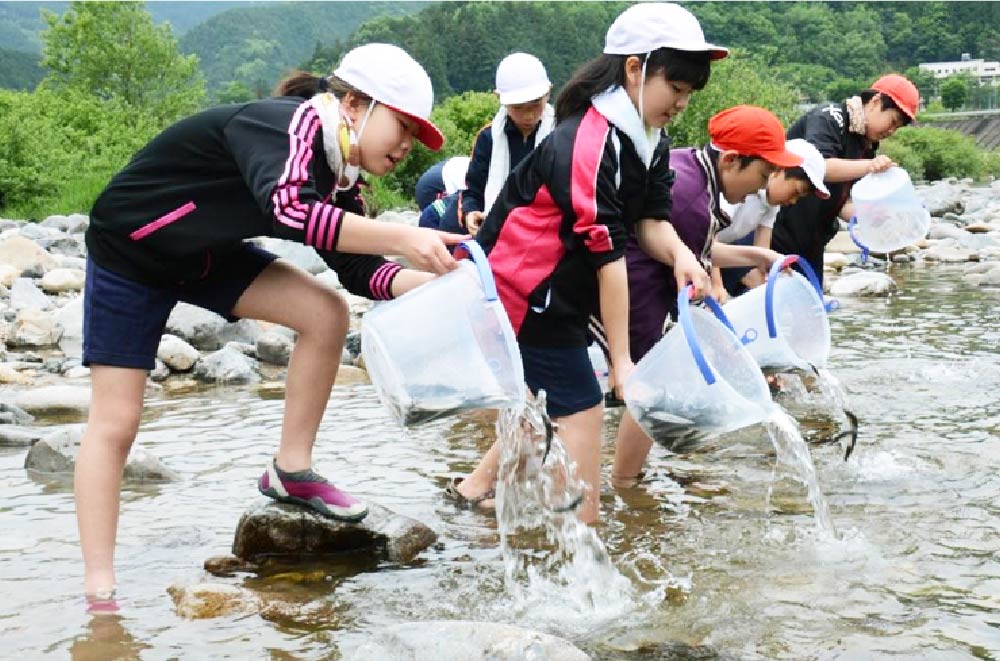GIAHS “Ayu of the Nagara River System”
- About Nagara River
- Well-loved Ayu Fish
- Various Creatures Living in the Clear Stream
- River Fisherman
- People's lives nurtured by the river
- The Future of Forests, Rivers and People
-
GIAHS “Ayu of the Nagara River System”
The Future of Forests, Rivers and People
The environment and landscape of Satokawa can be protected by devising ways to use the water without polluting or wasting it resulting in protecting rivers and nurturing the forest.

”Mizubune”, the wisdom of the people with spirit that cherishes water
Hachiman-cho, Gujo City, where the Yoshida River flows, is a tributary of the Nagara River. It is a "water town," with waterways running throughout the town and water gushes out everywhere, having learned from the great fires of the past.
On the side of townhouses, common water multi-layered tanks for the usable ground water are set up, which are called “Mizubune”, a system for using water effectively with minimum pollution. Each takes the form of a box like tank having two or three different height levels. The top level is for drinking water, and the overflowing middle stage water is used to cool drinks and food.
In the bottom level, water is used for cleaning soiled vegetables or used dishes. Finally, it flows into the pond where the carp are released. The mud and other dirt sinks to the bottom, and the carp eat the leftover food from the dishes. The purified water is then returned to the river.
This method wastes no water and is thought to contribute towards delivering clean water downstream.
In the city of Gujo near the Nagara River’s source, a mentality and belief in the importance of treasuring the water and delivering clear water downstream has been passed from generation to generation.


The Links among Forests, Rivers and Seas
Along with activities to protect the river environment, there are also activities to protect the forest at the headwaters of the river.
Activities to protect rivers
In the old days, when the river used to flood regularly, upsetting the riverbed and washing it away, the middle basin of the Nagara River used to be a white-cobblestones riverbed.
However, it has now changed into a riverbank covered with sand and grass.
As for the cause, it is considered to block the flow of water because soil and sand stream in from further upstream, and foreign plants that easily collect sand spread quickly.
In the middle basin, currently the river is dug up and cobblestone is laid on top in order to get the river restored as campaigns are conducted by local people.
In addition, many civic organizations protect rivers through cleaning rivers and protecting ecosystems.

Activities to protect forests
The rain water that falls in the mountain forest of the basin and infiltrates underground, flowing into the Nagara River.
In a healthy forest, water is stored between the roots of the tree, and clean water flows out little by little.
However, even though it looks like a healthy, green mountain at first glance, some forests remain unattended after they were planted. The number of those neglected forests has been increasing not only in the Nagara River but also in various places in Japan.
Such forests may cause landslides, washing earth, sand and trees away through the river and the sea, which brings about pollution.
Through cutting trees properly, managing the mountains and planting, forests become healthy with more light and wind, absorbing more carbon dioxide.
As a business developing the forest in the Nagara River source, activities for broad-leaved tree planting that has high water holding capacity and produces a lot of fertilizer have been carried out by Gujo Fishery Cooperatives
River fishermen know through their experience that forest health is necessary for river stability.
In addition, a lot of citizens' groups are engaged in activities to protect the forest, such as water resource cultivation and forest conservation.

